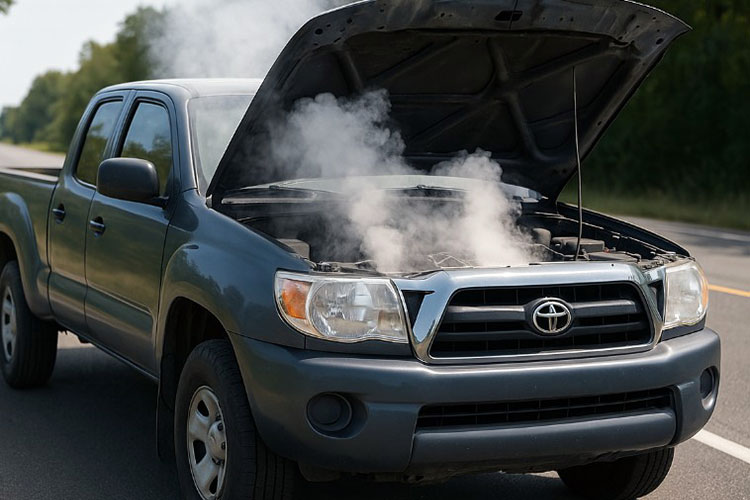What to Do When Your Car Overheats (And Why It Happens in the First Place)
By: Luke Shaff ~
4/3/2025

Overheating can feel like your car is throwing a tantrum. Steam coming from under the hood, a scary-looking dashboard light — it’s not something you want to ignore. But don’t panic. In this post, we’ll walk through why your car might be overheating and what to do (and not do) if it happens to you.
What Causes a Car to Overheat?
Here are the most common reasons:
- Low Coolant Levels
Coolant (aka antifreeze) keeps your engine from getting too hot.
If it’s low, your engine can’t cool down properly.
- Broken Thermostat
This part controls the flow of coolant.
If it’s stuck closed, the coolant can’t move, and the engine overheats.
- Radiator Problems
A clogged, leaking, or damaged radiator can’t cool the engine effectively.
- Water Pump Failure
This pump moves coolant through your engine.
If it stops working, the coolant won’t circulate, and the heat builds up.
- Broken Cooling Fan
This fan helps cool the radiator.
If it’s not spinning when it should, temperatures can spike quickly.
- Leaky Hoses or Connections
Even a small leak can lead to low coolant levels.
What to Do When Your Car Overheats
- Turn Off the A/C and Crank the Heat
Sounds weird, right? But the heat helps pull some warmth away from the engine.
- Pull Over Safely and Turn Off the Engine
Don’t try to keep driving. Stop as soon as it’s safe to avoid damaging the engine.
- Wait for the Engine to Cool
Don’t open the hood right away — hot steam or fluid can cause burns.
Wait at least 15–30 minutes before checking under the hood.
- Check Coolant Levels (If You Have Coolant and Gloves)
Once it’s cooled down, open the radiator cap very carefully or check the coolant reservoir.
If it’s low and you have coolant, top it off.
- Call for Help if Needed
If the coolant keeps disappearing or the car keeps overheating, you may need a tow or a mechanic.
How to Prevent Overheating in the Future
- Check your coolant regularly (especially before long drives).
- Get your cooling system inspected during routine maintenance.
- Replace old hoses or belts when your mechanic recommends it.
- Keep an eye on your temperature gauge when driving — if it starts creeping up, you’ll know to act early.
Overheating doesn’t always mean disaster, but it is your car’s way of saying something’s wrong. Stay calm, follow the steps above, and keep your cooling system in check — your engine will thank you!
 Luke Shaff
Luke Shaff